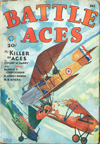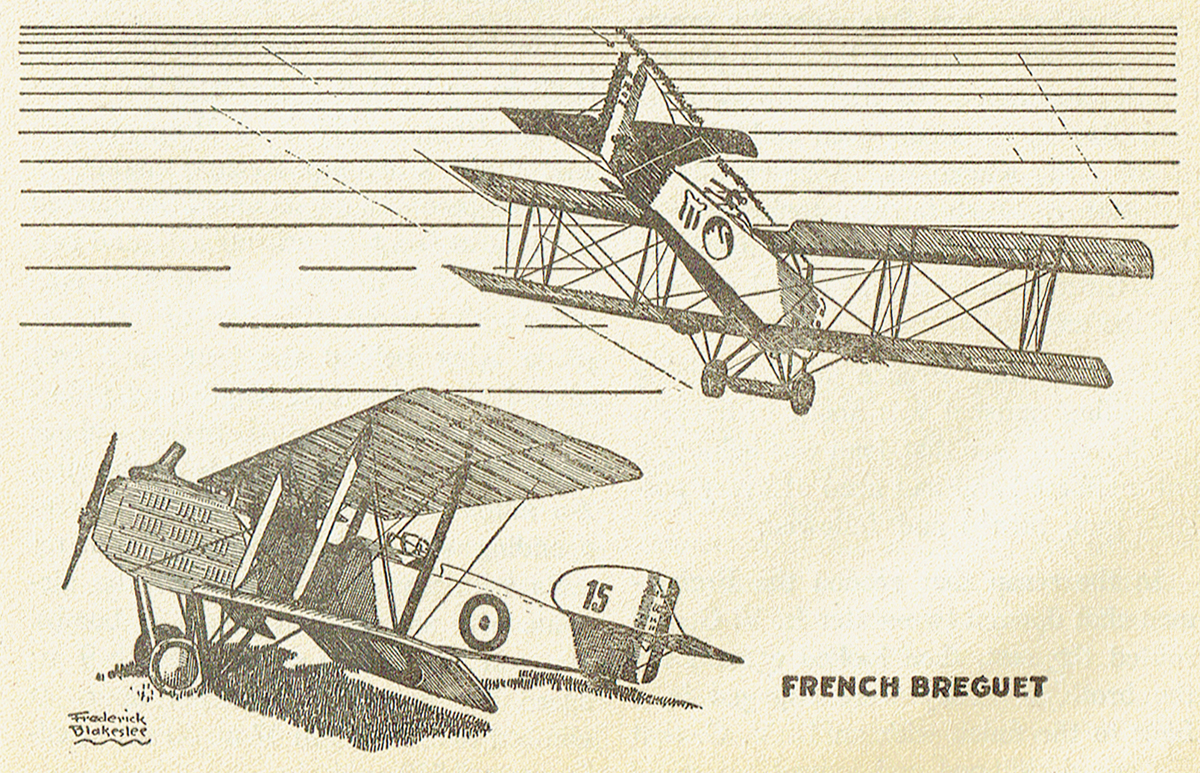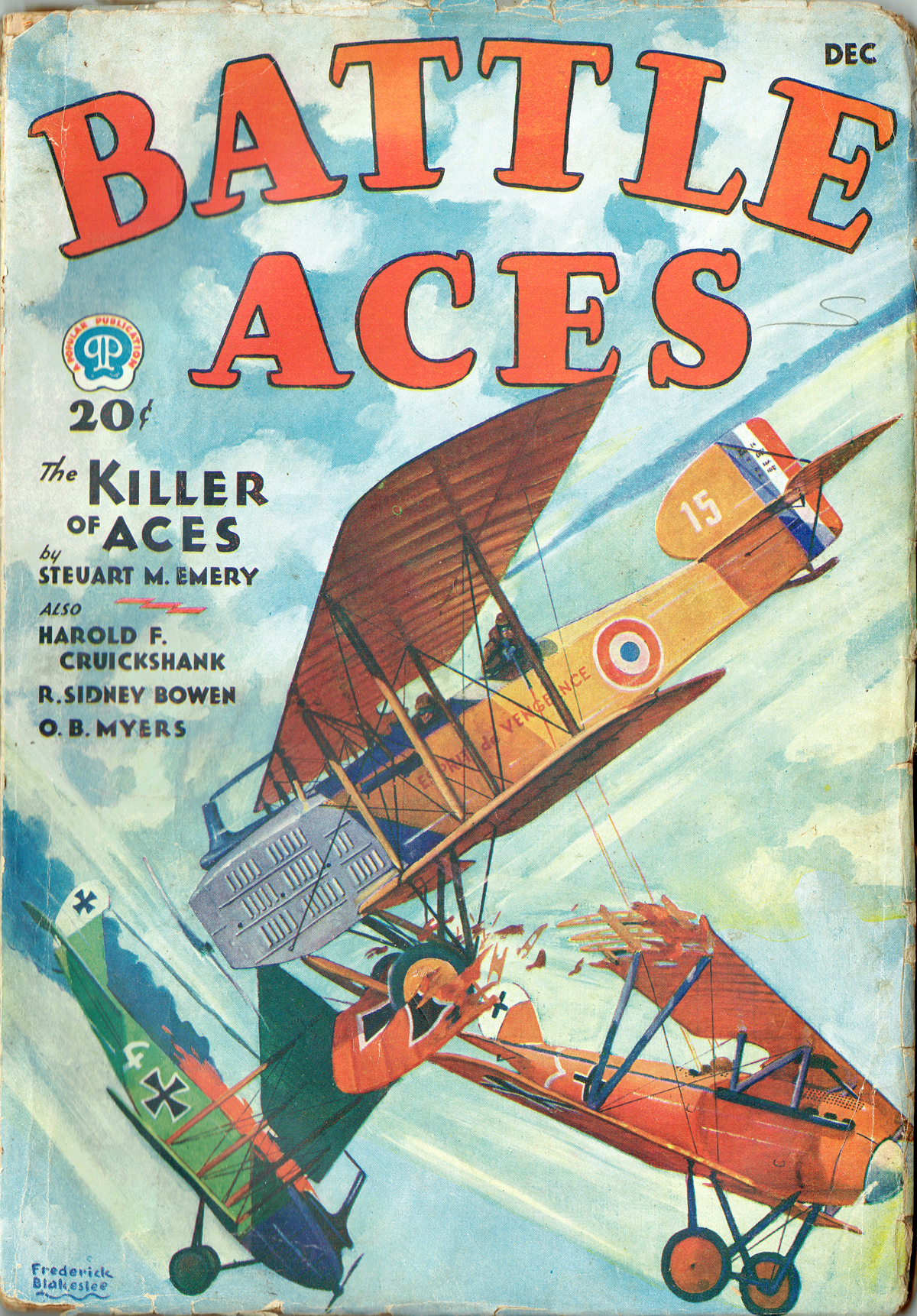“The Lone Eagle, January 1934″ by Eugene M. Frandzen
Eugene M. Frandzen painted the covers of The Lone Eagle from its first issue in September 1933 until the June 1937 issue when Rudolph Belarski took over with the August issue of that year. At the start of the run, Frandzen painted covers of general air action much like his Sky Fighters covers. Here, for the fourth issue from January 1934, Frandzen has a German Halberstadt smashing into the undercarriage of a French Breguet—with dire consequences.
The Story of the Cover
SMASH! A crackup in the air! 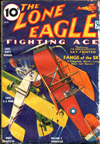 That is the picture on this month’s cover.
That is the picture on this month’s cover.
A shaved second before the collision there were two trim ships battling each other high above the war-torn fields—two ships piloted by airmen intent on blasting each other into oblivion. Vickers, Lewis, and Spandau slugs have slashed back and forth across the heavens.
The big Breguet with its wing span of forty-seven feet is not as maneuverable as the small Halberstadt scout with a span of only twenty-eight feet. But the Breguet’s handicap is offset by its rear gunner, who has an office unequalled for visibility. On either side of his pit he has Cellon windows.
There is a hole in the floor that he can see through and fire through if necessary. Therefore the blind spot under his tail is not as vulnerable as in ordinary two-seaters.
A Dangerous Opponent
The small Halberstadt has had a taste of the observer’s fire when sneaking in from behind to make the hoped for kill. The ship the German pilot thought was an easy victim has turned out to be a dangerous opponent.
Twice the German pilot has barged in from in front. Each time a stream of Vickers’ slugs drenched his ship. One of those hot, whistling messengers of death has slashed into his shoulder. Not a fatal wound, but a painful one. A wound that causes his flying to become jerky and erratic.
Another Angle of Attack
Mad clear through from being bested in a sky duel with a lumbering two-seater the German pushes the nose of his ship down. He starts to slither out of the fight, then he suddenly changes his mind. There is one angle of attack he has not tried; that one is coming up under the blunt nose of the Breguet. Coming up with a brace of Spandaus churning out hot steel.
His Halberstadt shudders as he pulls it out of its dive into a loop. Up swings the nose. He presses his gun trips. A short stutter from one gun, then it jams.
The other gun is silent—its ammo exhausted. Then directly in front of his blazing eyes looms the undercarriage of the Breguet; six husky steel members holding the axle and wheels—the strongest under construction of any Allied two-seater. Too late the German yanks on the stick to pull out of danger.
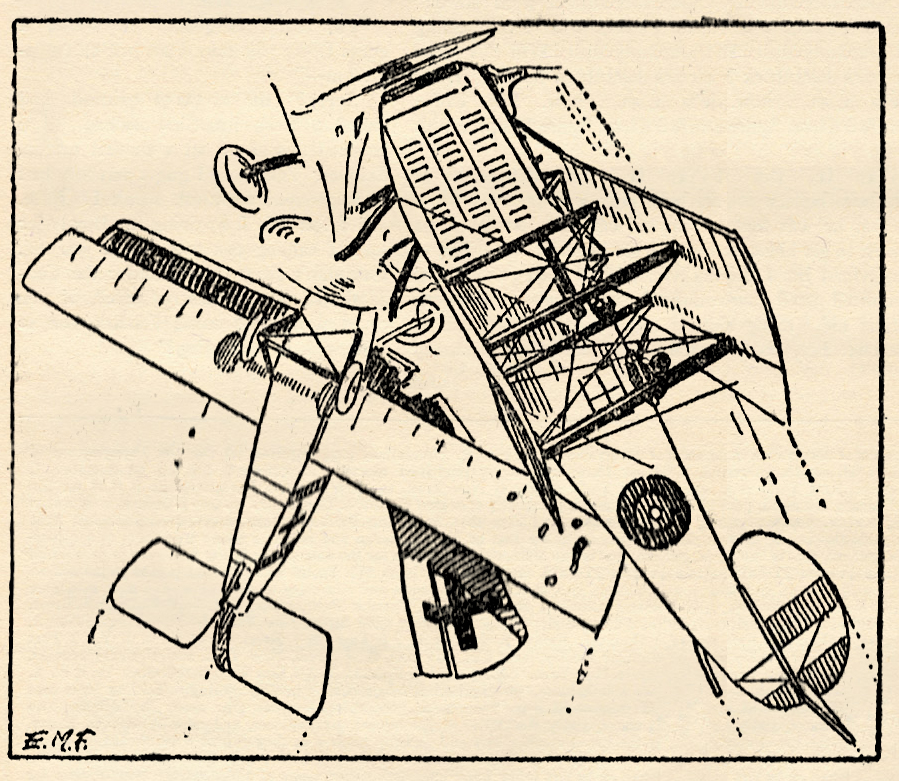
And This Is What Happens
Smash—his prop chews into the tough steel struts. His top left wing snaps—rips off—his prop flies to pieces, as does the undercarriage of the Breguet.
Both ships will get to earth; but one will be a wingless fuselage holding a doomed German pilot. The Breguet, minus wheels, can come down under its own power, flatten out and take the ground on its chest. It will be a rough landing but it is a ten to one chance that those two Yanks will be in the air again in a few days. They will be on the job—looking for trouble and overconfident Boche pilots.
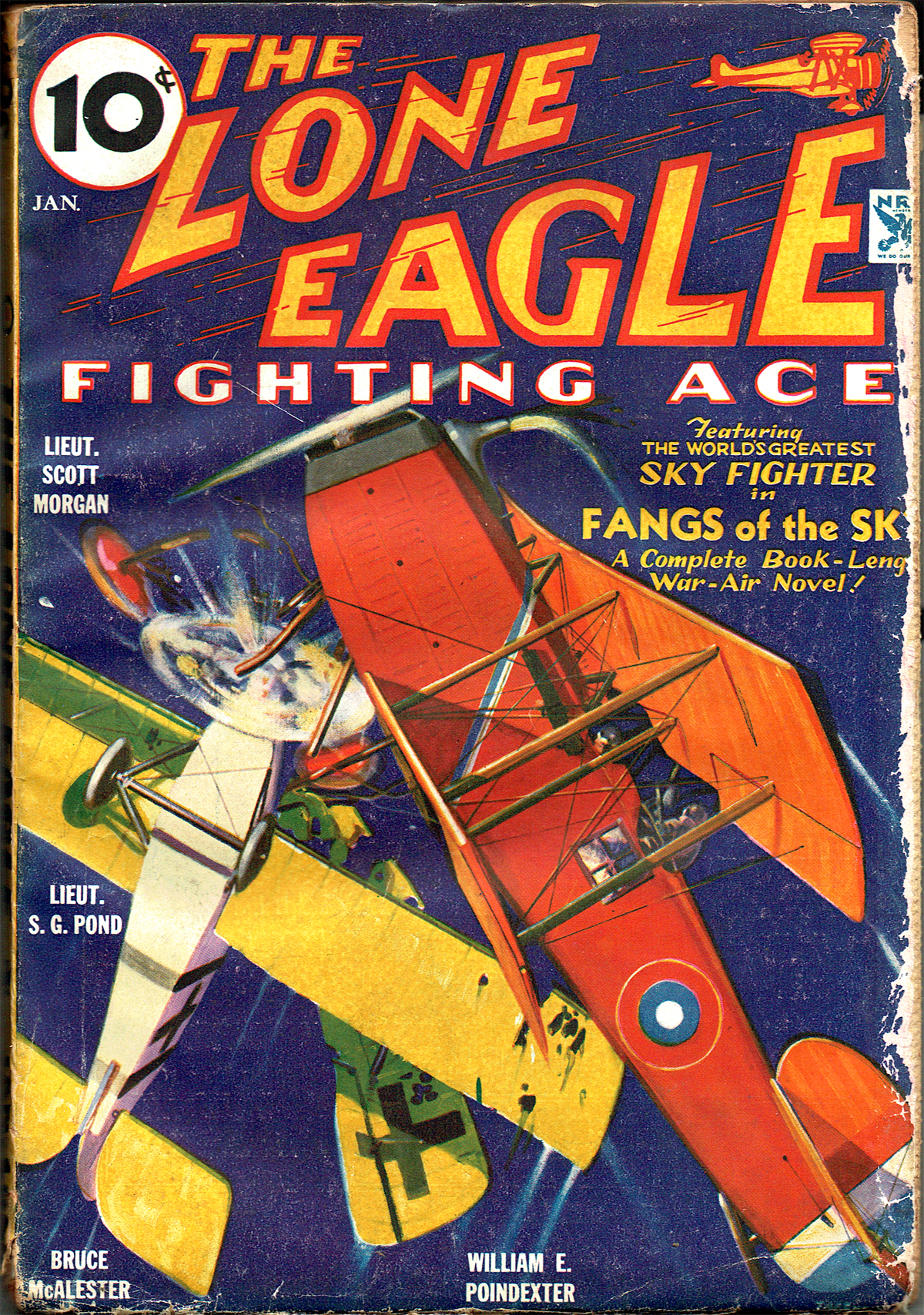
The Lone Eagle, January 1934 by Eugene M. Frandzen
(The Story of The Cover Page)





